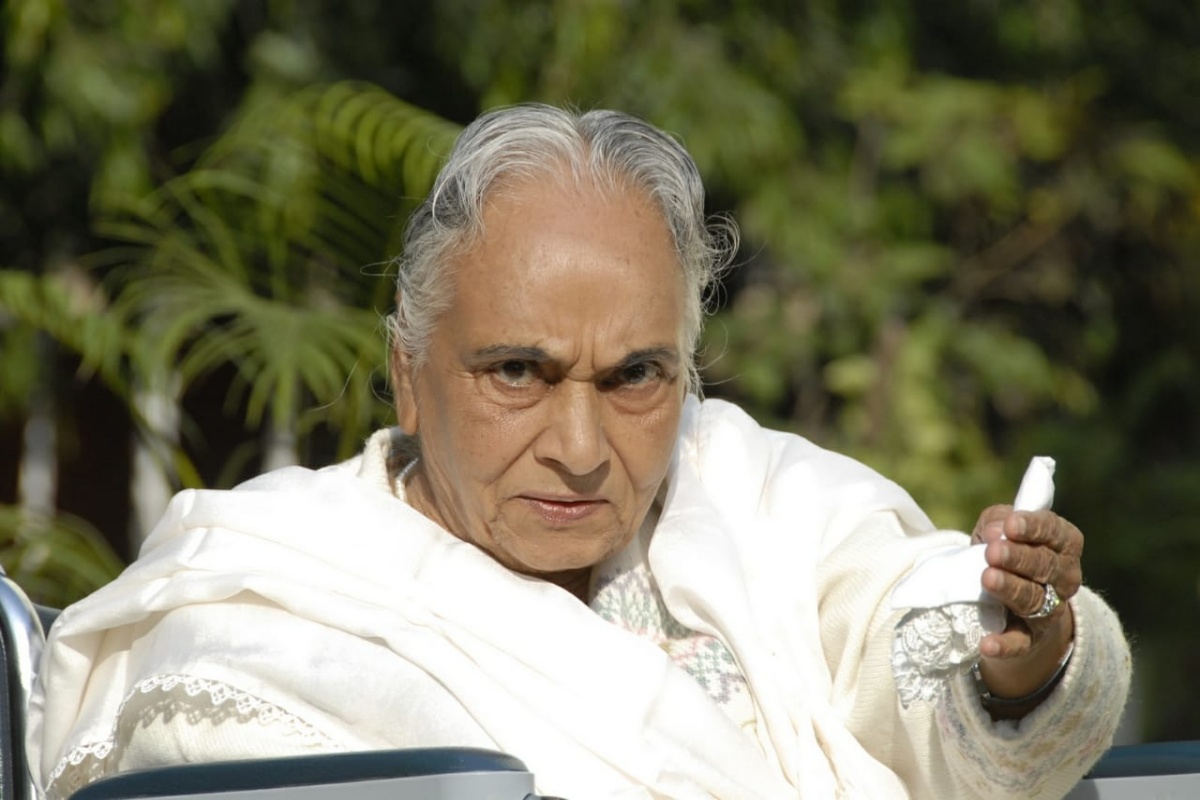The inspiring story of Punjabi University’s first woman VC
She was educated in Lahore and became the first woman Vice-Chancellor of a university in northern India, representing the country in various international academic fora.
“We decided to go for the hybrid model — an online launch from home for a print and flipbook edition. The latter is a screen-friendly format, hosted online, allowing easy access from phones, tablets or computers. The flipbook allowed us to reach worldwide, and over 150 readers accessed it on the first two days of release.”

Inspiration doesn't age.
The life of a 98-year-old woman educationist and administrator is an unlikely role model in a time of young Instagramers and Ticktock stars.
As Punjab Chief Minister Amarinder Singh said in his message, “A Patiala girl who was educated in Patiala and Lahore, Inderjit Kaur was Vice-Chancellor, Punjabi University, Patiala, from 1975 to 1977.
Advertisement
“We are proud that she was the first woman to hold this position in northern India. In 1980, she took over as the Chairperson of the Staff Selection Commission, New Delhi.
Advertisement
“She handled both positions of responsibility with great elan, and various achievements marked her tenure.”
Inderjit Kaur Sandhu received her MA in Philosophy from Government College in Lahore in 1946. She was teaching at the Government College, Patiala, when Partition came, and she played a stellar role in the resettlement of displaced women after Partition.
She also ensured that women who found themselves on the wrong side of the border were escorted to Pakistan and reunited with their families. More is documented in “An Inspiring Journey” by Roopinder Singh, an author and Chandigarh-based senior journalist.
“I wrote the biography of Marshal of the Indian Air Force Arjan Singh DFC, and at the launch, I said that I wanted to document the lives of Indian icons so that they were the role models for our younger generations,” Roopinder Singh told IANS on Sunday.
He has published other books, but writing a book on his mother proved to be a difficult task.
“How do you encapsulate the life of someone who is so multi-dimensional? I decided to seek various opinions from people who had interacted with her over the years. Since I wanted to get their authentic voices, I invited the authors to write in either English or Punjabi. As we look at the two sections in the book, we notice that there is a tonal difference — starting with the manner of addressing the subject to the subject matter and perspectives of the authors.”
The 200-page book has English and Punjabi sections, with many pictures in between the two.
“This too was a conscious decision,” Roopinder Singh says, since “pictures paint portraits of the period” and thus help “us identify with it”. Also, these are important occasions and people, so the visual impact has to be considered.
Gursharan Kaur, the wife of former Prime Minister Manmohan Singh, wrote the foreword of this book. In that, she says: “I can still clearly remember Inderjit-ji. She taught us philosophy. She had a very pleasant personality, and a soothing, gentle voice, very patient with those slow to understand. Her devotion to learning led her on a long and fruitful academic journey, as her many works and achievements show.”
Archival materials written by publisher Ashok Chopra and the late humourist Suba Singh provide a snapshot of the times. Personal accounts of younger persons — authors Ranjit Powar and Aradhika Sharma, journalist Madhusudan Srinivas, administrator Radhey Pratap Singh and Deputy Advocate General Daldeep Singh, and Inderjit Kaur’s grandchildren provide different kinds of perspectives.
The Punjabi section has articles by author Dalip Kaur Tiwana; historian Kirpal Singh; university administrator Tirath Singh; literary critic Kuldip Singh Dhir; and journalist Narinder Singh Sathi.
Educationist Harcharan Kaur, former MP Tarlochan Singh, university administrator Dalip Singh Uppal and linguist Bhupinder Singh Khaira bring out the different aspects of the life of Inderjit Kaur in the book.
Also included in this section are archival articles by Rajinder Kaur and Balwinder Kaur.
Writing the book is one thing. Publishing it in the times of Covid is quite another, says Roopinder Singh. “We decided to go for the hybrid model — an online launch from home for a print and flipbook edition. The latter is a screen-friendly format, hosted online, allowing easy access from phones, tablets or computers. The flipbook allowed us to reach worldwide, and over 150 readers accessed it on the first two days of release.”
Everything evolves. Why not a book on a 98-year-old achiever.
Advertisement